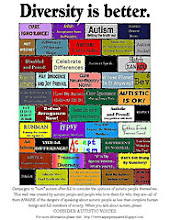Tackle it Tuesday - Teeny tiny

We’re pretty busy around here so today’s tackle is a tiny one that should bring big rewards, especially for me. The trouble with having so many bodies around is that any semblance of organization and tidying is pretty much destroyed with the passage of the next 24 hours. Here is a slightly longer term solution.
Choose the drawer in your kitchen with the highest traffic, the one that everyone needs to use frequently.
First weed the drawer of all non essentials. Try and put like with like. 
Have a trial run to see what you can fit in one drawer easily and discard the rest for another time. Take a large sheet of coloured paper and draw around each item with a black marker pen. Alternatively photograph each item but this can be problematical due to scale. [and expensive!] Laminate the paper cut-outs so that it will last longer and be easier to clean.
Line the drawer with ‘grip liner’ to reduce clanking.
Clean all items and replace in the correct position in the drawer. 
Finally label the drawer with something relevant.
Some families may benefit from a few additional steps.
Sometimes numbering the empty spaces also helps, as can the name of the item written on the relevant cut out. Many children can read either words or numbers. For example, they may not know what a tin opener is, but if it is matched to a number and shaped cut-out, it is far easier to identify.
On completion photograph the contents of the drawer and enlarge to A4 size if possible. Laminate and mount on card and place on the wall of the counter behind the corresponding drawer. If this offends your ‘perfect kitchen’ image, you can always stick it on the inside of the door below, which can also be useful for smaller children who are better matched in height to this visual aid.
Alternatively, place the ‘cheat sheet’ in the drawer itself over the contents where it can be removed and held as a ready reference guide. Often physically holding the card, something tangible, in one hand aids eye tracking and referencing back.
This is also handy if you have additional spare bodies floating around your house such as therapists, baby sitters and miscellaneous experts.
There are any number of adaptations to suit the individual needs of your little helpers. For instance, part of the reason for covering the paper icons with sticky back plastic is not only to keep it clean but also because the texture of paper is abhorrent to some people.
Other children may find the reflective nature of the laminate equally as offensive. Some children respond positively to certain colour preferences e.g. pink becomes a magical co-operative hue but black means that no-one will dare go within shooting distance.
There are many fringe benefits to this approach other than tidiness and cleanliness.
Additionally, children learn competency, which boosts their self esteem. They learn that they are contributing to the household in a useful and helpful manner which also adds to their feelings of belonging to a unit.
Many of these kitchen items are words that they have no interest in learning. Even though they are still unlikely to ‘want’ to learn them, quite often they learn them incidentally by doing, if not accidentally, or what is often termed ‘kinesthetic’ learning.
They can tell that they have completed a task without help [or not very much help] perfectly and gain the satisfaction of a job well done, and task completion can often be a huge hurdle.
What I like about this task is that it is cheap, easy and relatively quick but with many long term benefits for everyone.
So now that we’re finished! Could you open the fridge, pass me a beer and number 17 please!
Cheers dears
Cut and paste
from this little
boxy thing below






1 comment:
You are my Organizational Hero.
I'm also a bit scared of you--being able to create such a space. If I get everything into one heap somewhere, I call that a good day.
Post a Comment